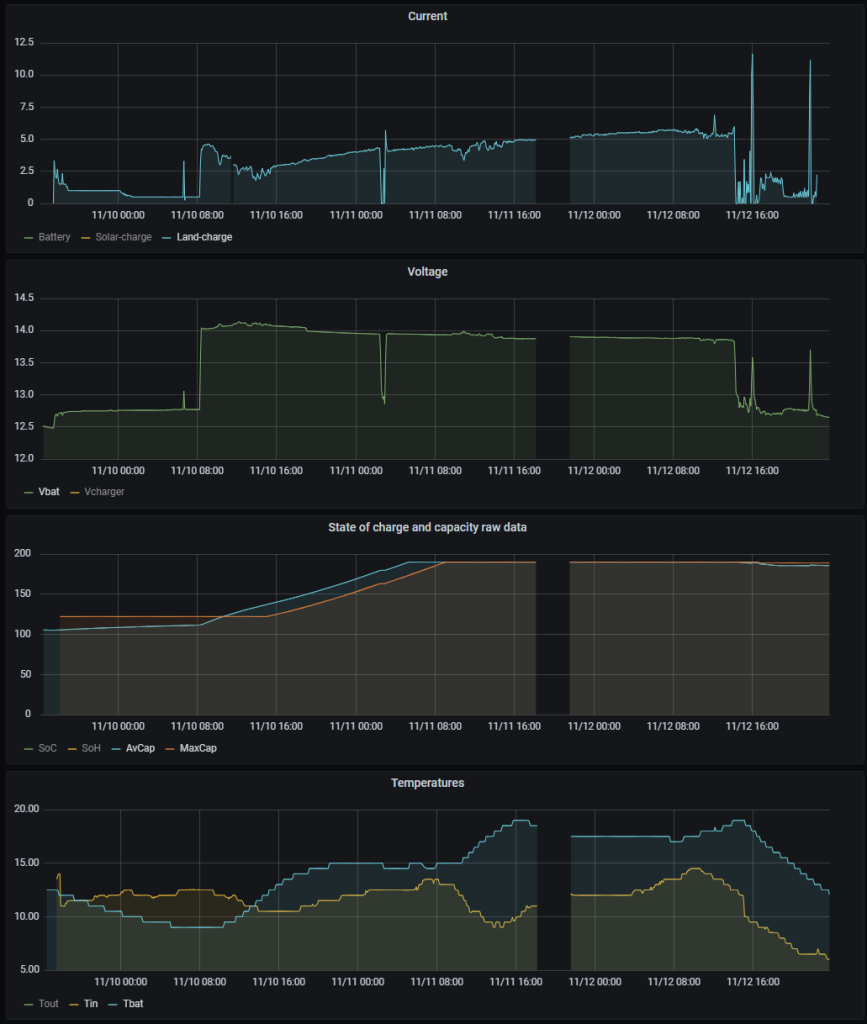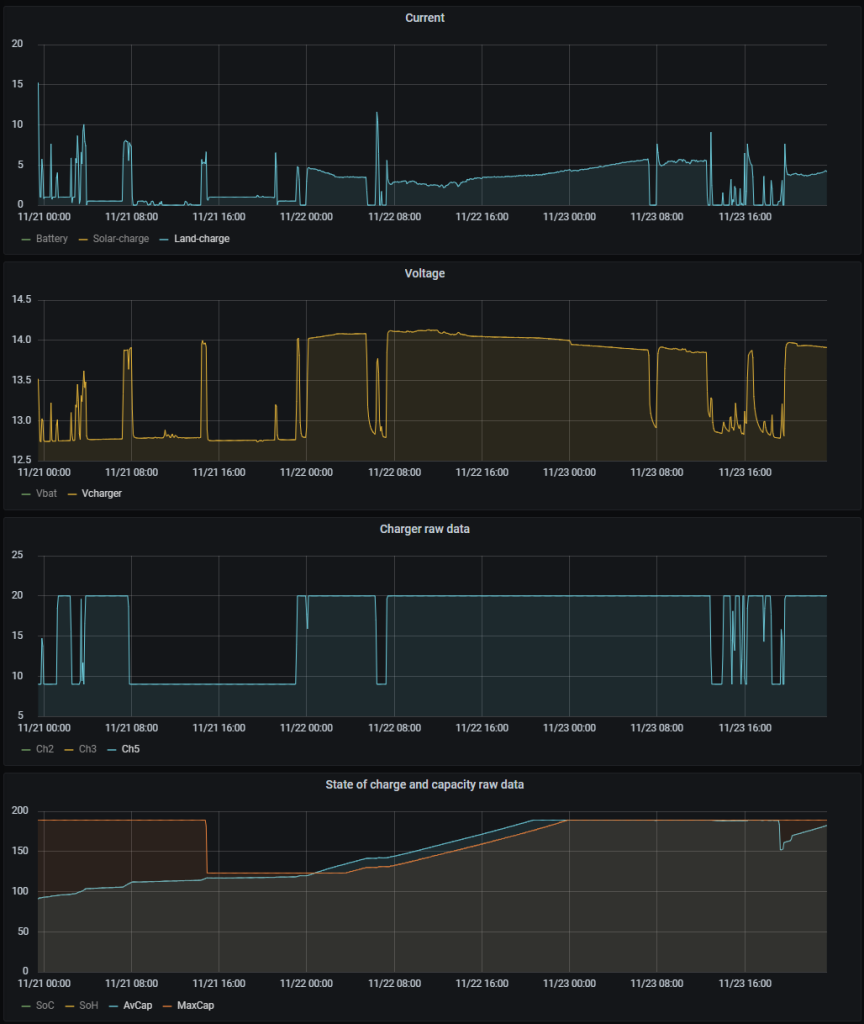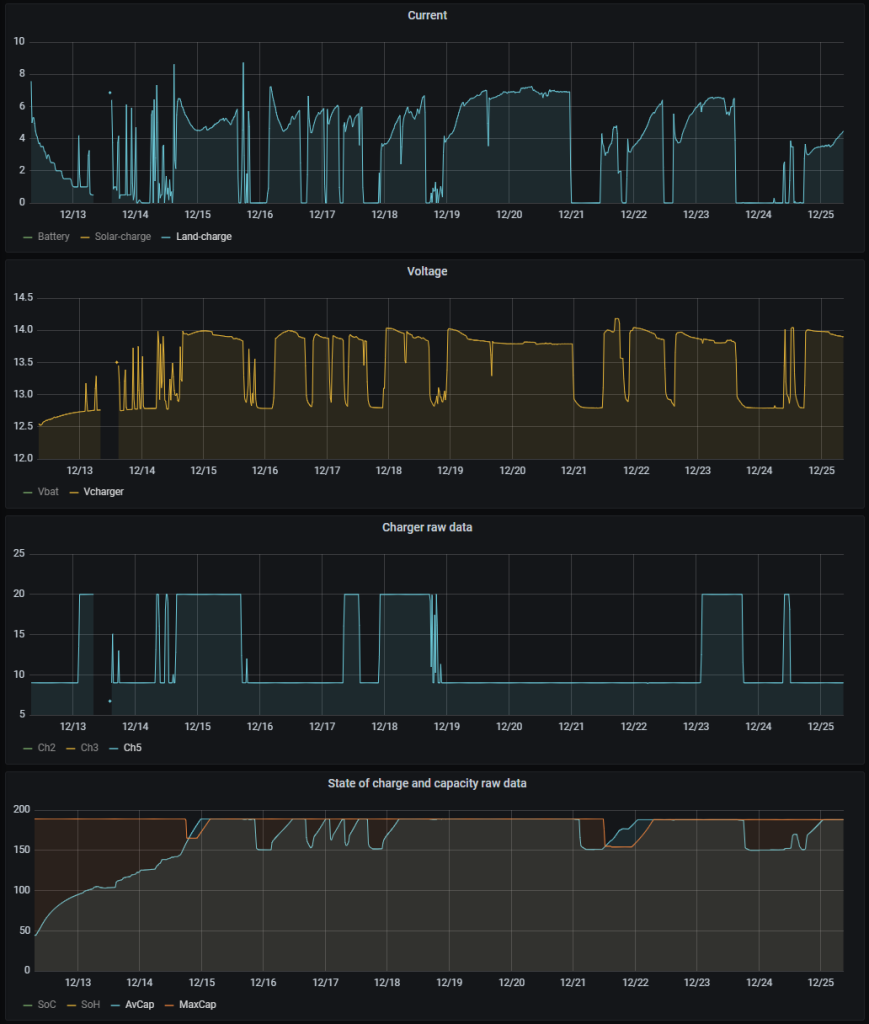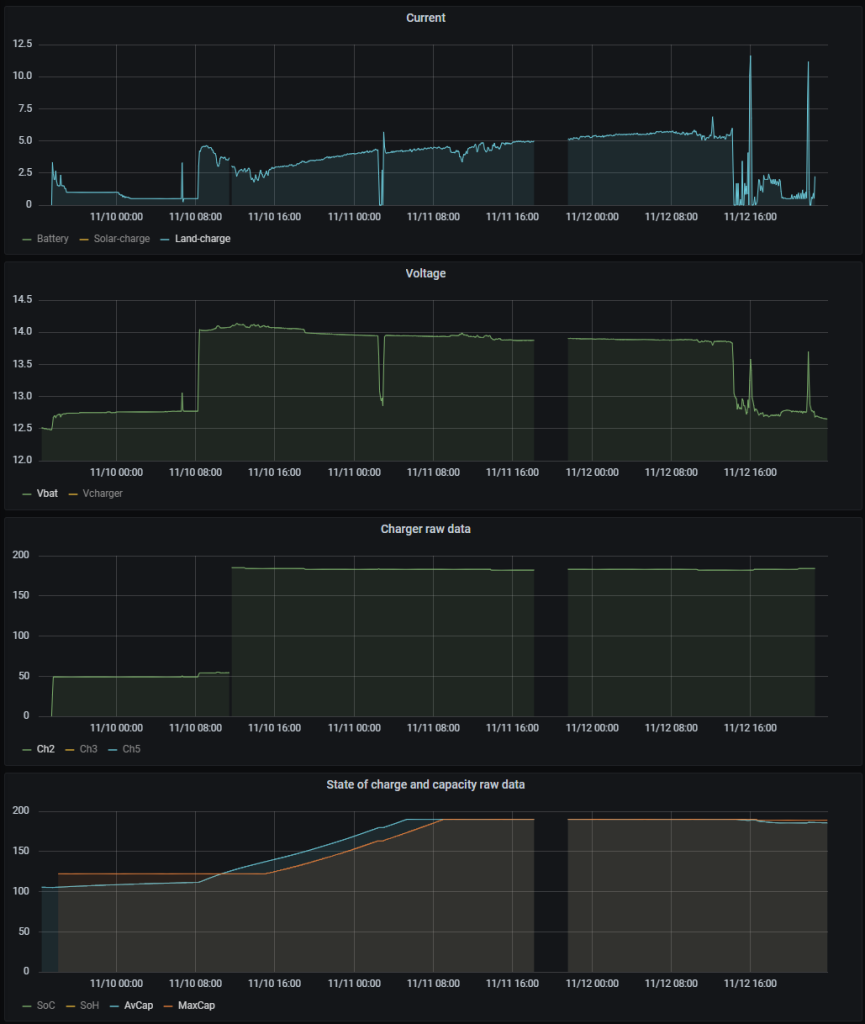The 230V charger in the nugget is a Dometic PerfectCharge SMP439A. It responds to the IDs 0x18 and 0x19. It only responds to the Leader’s headers when it is connected to the 230V and the main 230V fuse at the side panel below the kitchen is switched on. When i is not connected to 230V, the headers remain unanswered. Both messages are short. The contain some status bytes and a signal that I could not yet fully decode. Details below for further investigations. There is also a charging voltage and current in the data.
--------------------------------------------------------------------------------
Dometic PerfectCharge SMP439A
ID : 0x18
data: B9 5D 34 00
| | | |
AA | | | = unknown signal. May represent estimated MaxCap
VL VH | = Vcharge (=Vbat) (x/1000 V)
?? = (always 0x00)
--------------------------------------------------------------------------------
Dometic PerfectCharge SMP439A
ID : 0x19
data: 23 09
| |
II | = I-charge (x/2 A) in steps of 0.5A
AA = charger status. No corr. found with I, V, T, Cap
0x00, 0x09, 0x14 observed
--------------------------------------------------------------------------------
The first recorded run is presented below. Typical charge currents are around 5A. In later runs up to 7A has been observed. The Voltage never rises above 14.1V.

Capacity calibration
Two months before the Nugget was connected to the 230V the battery has been drained to near dead conditions. After that the solar panels had been installed and they already partially charged the batteries with a V-bat=12.5. However, the Hella IBS rated the Maximum available capacity at 122Ah. In the third trace it can be seen how the Hella IBS responds to continued charging. First the Available Capacity starts increasing, until it surpasses the maximum configured capacity of 190Ah. From that moment on it decides that the batteries have more capacity than the anticipated 122Ah, and starts correcting the maximum capacity until it reaches the maximum configured capacity.
From then on the charger continues to put charge in the battery. However, the batteries are not supposed to take more charge than they can hold so the additional energy is clearly dissipated (into heat). consequently the batteries starts to become warmer as can be seen from the fourth trace. Needless to say that the batteries are severely impacted by the almost full discharge condition that they suffered from earlier.
Status information
The status information could not be decoded. One status byte (Ch5) in the graphs has shown three distinct values (0x00, 0x09 and 0x14). In first instance 0x14 seems to correspond with bulk charging and 0x09 with absorb-charging (see third trace below):

However on a later run there are many occasions where it is not charging in Ch5=0x14 and is charging in Ch5=0x09:

The Ch5 value in the third trace has only two discrete values (0x09 and 0x14). Sometimes it looks like it has in-between values, but that is a graphing artifact. Finally there is an unknown time series signal. Only in the very first run it started with values around 50, but ever since it stayed around 183. It may be some estimation of the battery capacity, but that is really a long shot:
